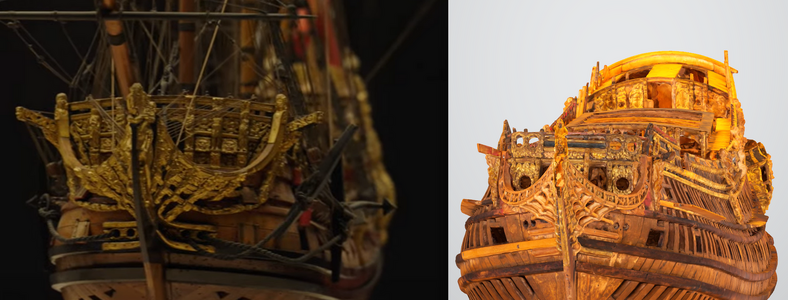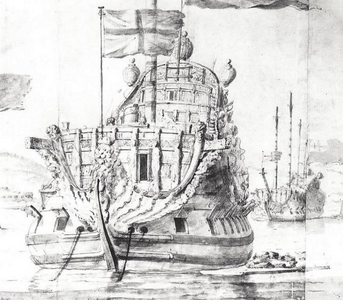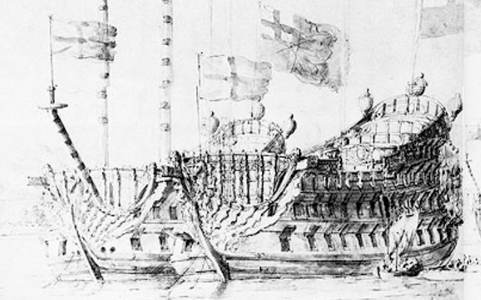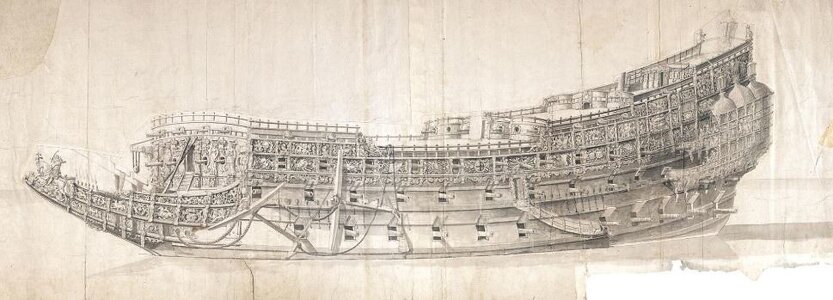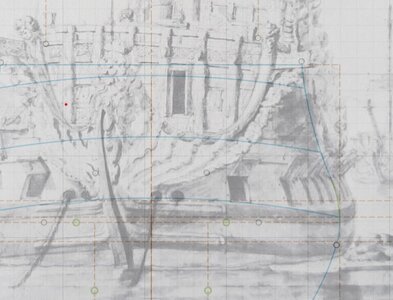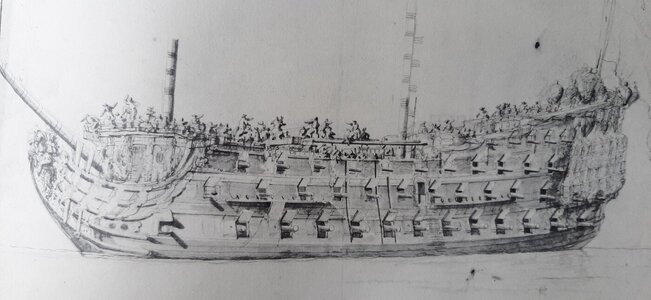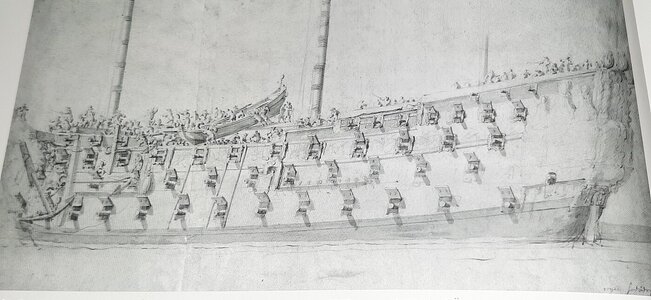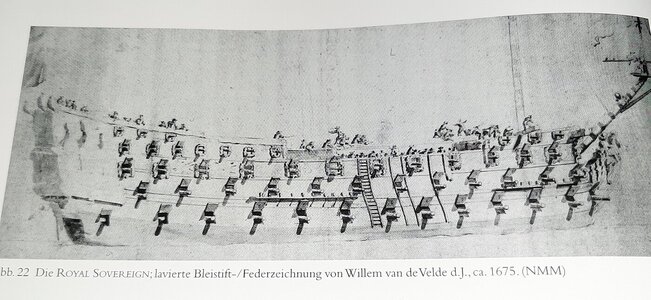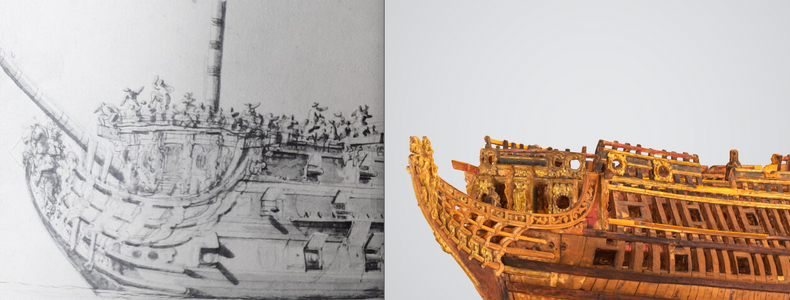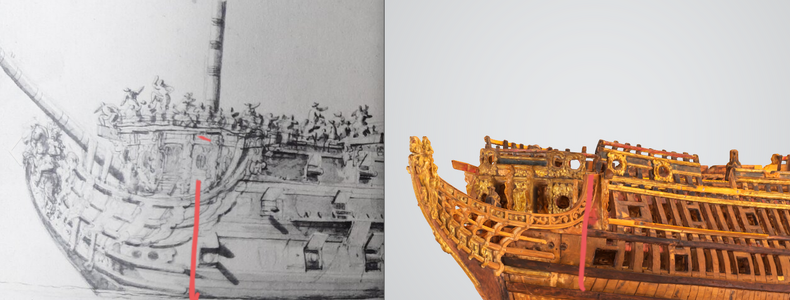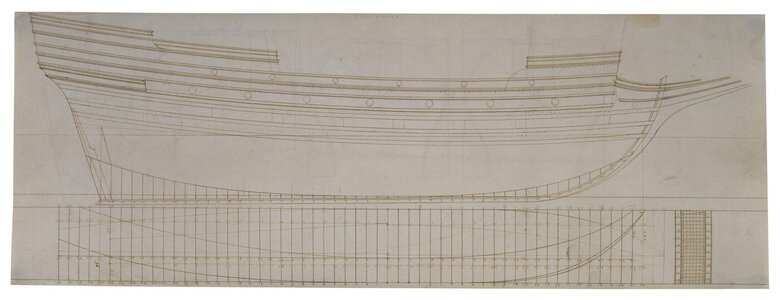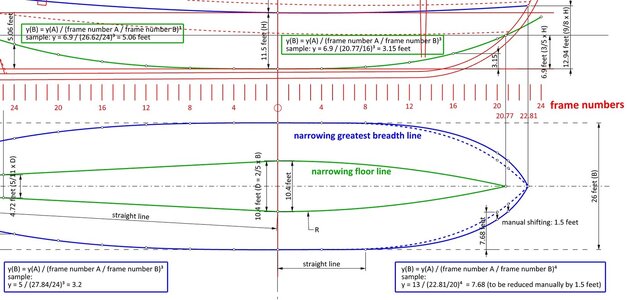.
Below is a reproduction of a very important ship plan of English origin from the Hermitage collection in St Petersburg, Russia. I once carried out an analysis of the second plan (of a smaller ship) from this set, but I have yet to return to this. Anyway, these plans are undated, however, most of the longitudinal design lines were geometrically constructed according to an algorithm given in an also anonymous manuscript dated 1620–25, the so-called Salisbury manuscript (reproduced, for example, in Peter Kirsch's extremely useful work,
The Galleon. The Great Ships of the Armada Era).
Personally, I date these plans precisely to roughly the decades just during or immediately prior the construction of
Sovereign of the Seas 1637.
The plan depicts
a three-decked ship and it is important to note the shape of the line of maximum breadth at the bow in the top view. The aptly conceived shape of this line at the bow must also have been important to the designers of the time since it was so meticulously corrected in the drawing, as indicated by the double line – before correction and after correction, and exactly in the way described in the Salisbury manuscript.
Note also that in the sheer view, the somewhat geometrically fictitious design line of maximum breadth still runs in the old manner, i.e. following the wales or decks till the very end at the stem post, and is not terminating at the forwardmost point of the stem post, as it should according to the inexorable geometry. This has certain implications, but perhaps not at the moment so as not to prolong the post.
Below is still a diagram with an extract from my old analysis of a smaller ship from this Hermitage set of plans.
.

